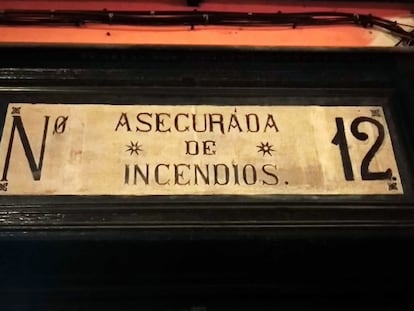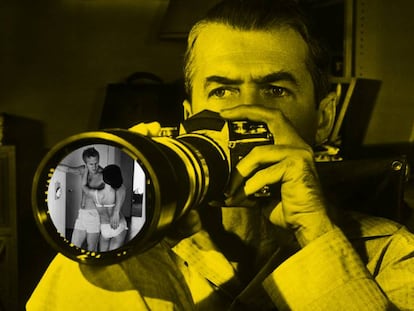Candiel, the alcoholic drink once given to children in southern Spain
Thought to be English in origin, the egg-sugar-sherry combination was administered to weakly kids in Cádiz up until the mid-20th century
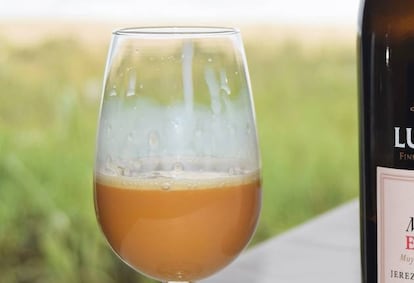
Candiel or candié was a “fortifying” drink given to many children in Spain’s southern Cádiz province in the mid-20th century. There was only one little problem with it: the ingredients included alcohol.
During a time of threadbare food pantries and weakly offspring, parents would fix their kids a power drink made with sherry wine (typically the sweet kind), egg yolk and sugar aimed at pumping some vitality into their veins.
It was thus not uncommon to see 10- and 11-year-olds running around the streets with more energy than a wind farm, after taking a few swigs from that orange brew.
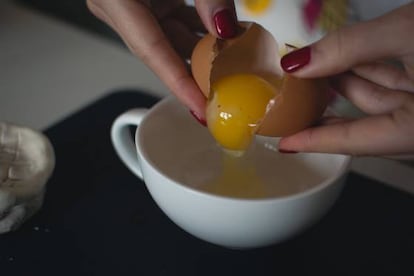
“I remember my mother would make it for me using muscatel wine, either to give me some pep or to stimulate my appetite. I must have been around 12 or so,” recalls Pepi Morales, now 58, who is from Trebujena, a town located very near Jerez de la Frontera – the world capital of sherry wine.
Mariángeles Jiménez, who was born in nearby Sanlúcar de Barrameda in 1951, can also remember her first experience with liquor. “Two of my uncles worked at wineries, and when they came home after fining the wines with egg whites, they would bring back a bunch of discarded yolks. These were used to make candié, which they would give me as an invigorating drink when I was five or seven years old.”
The British connection
But the origins of candiel go back at least to the 18th century. In volume two of the Spanish dictionary Diccionario de Autoridades, published in 1729, candiel was defined as “a kind of broth or sauce made with white wine, egg yolks, sugar and other spices, and used to season and cook pullets, hens and other fowl. It is very tasty and used frequently in Andalusia and other parts.” But by 1783, candiel was no longer being described as a meat seasoner.
“It is an English drink, I don’t know whether they made it with sherry at first,” says Beltrán Domecq, president of the governing council of the wine regions Jerez-Xérès-Sherry and Manzanilla de Sanlúcar, which are protected by Denominación de Origen designation similar to the French appellations.
“It is likely that the word candiel is an adaptation of the words candy and egg.” he adds.
The theory makes sense, as the English had a large presence in the wineries of Jerez at one time. “My maternal family is of English descent, and my great-grandfather founded [Jerez-based winery] Williams & Humbert.” According to the governing board’s website, English, Irish and Scottish winemakers settled in the area in the 17th and 18th centuries – coinciding in time with the first mention of the word candiel in the Spanish dictionary.
Even Charles Dickens mentioned it in chapter 23 of Dombey and Son, which he published in the 1840s. In this passage, a character recommends the following concoction for Paul Dombey’s “bodily weakness”: “the yolk of an egg, beat up with sugar and nutmeg, in a glass of sherry.”
Paul was underage, so it was not just the Spanish who were offering their kids a shot of liquor to give them a boost.
The dangers
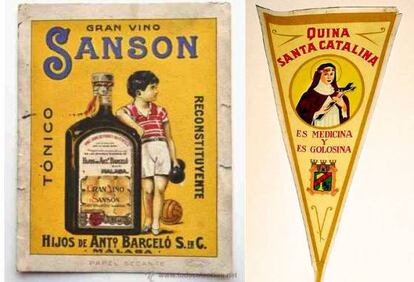
The drink may have its origins in British territory centuries ago, but in Spain it was still being given to children in the 1970s, either to energize them or to increase their appetite.
“It is possible that this drink worked as an appetite stimulant because alcohol consumption is linked to a greater feeling of hunger through various factors,” explains Beatriz Robles, a dietitian, nutritionist and food scientist. Robles notes that alcohol consumption makes it harder for the liver to transform glycogen into glucose, “which reduces blood sugar levels and may make you want to eat more.”
As for its alleged invigorating properties, Robles believes that “probably what was achieved was some loosening of inhibitions caused by the alcohol, without any positive aspects.”
Additionally, “the effects of alcohol on children are more intense than in adults. It can affect the development of vital organs and interfere with hormonal processes, besides impacting their cognitive development,” concludes this expert.
Quina
As if candiel were not enough, there was another type of alcoholic beverage that parents started giving their young ones at around the same time: quina-laced wine.
Just like candiel, it was one of those drinks viewed as “medicinal” that became popular in Spain in the 19th and 20th centuries. It was not until the the 1970s that society became more aware of the detrimental effects of alcohol on children.
“Quina is made by mixing wine with essence from the quina tree, where quinine is extracted from. To this is added syrup or honey, depending on whether you use sweet or dry wine, to counter the bitterness of quina,” says Antonio Barbadillo of the Barbadillo winery, which last year released a product named K de Quina. “It was given as an invigorating drink to weak children, or to increase their appetite. I remember that when they gave me quina as a child, I would then eat like a lion.”
Although traditionally this drink used the bark of the quina tree for this purpose, Robles says there is no scientific evidence to prove its effects, and so it is very likely that the effect on children’s appetite was due to the alcohol. It is probably the same process that makes people walk out of a nightclub and wolf down a kebab the size of a tank truck.
Quina is still commercialized these days under various brands such as Kina San Clemente, made by the Málaga Virgen winery. But candiel has become nothing more than a memory to be shared by a generation that grew up on it.
English version by Susana Urra.
Tu suscripción se está usando en otro dispositivo
¿Quieres añadir otro usuario a tu suscripción?
Si continúas leyendo en este dispositivo, no se podrá leer en el otro.
FlechaTu suscripción se está usando en otro dispositivo y solo puedes acceder a EL PAÍS desde un dispositivo a la vez.
Si quieres compartir tu cuenta, cambia tu suscripción a la modalidad Premium, así podrás añadir otro usuario. Cada uno accederá con su propia cuenta de email, lo que os permitirá personalizar vuestra experiencia en EL PAÍS.
¿Tienes una suscripción de empresa? Accede aquí para contratar más cuentas.
En el caso de no saber quién está usando tu cuenta, te recomendamos cambiar tu contraseña aquí.
Si decides continuar compartiendo tu cuenta, este mensaje se mostrará en tu dispositivo y en el de la otra persona que está usando tu cuenta de forma indefinida, afectando a tu experiencia de lectura. Puedes consultar aquí los términos y condiciones de la suscripción digital.
More information
Últimas noticias
Most viewed
- Sinaloa Cartel war is taking its toll on Los Chapitos
- Oona Chaplin: ‘I told James Cameron that I was living in a treehouse and starting a permaculture project with a friend’
- Reinhard Genzel, Nobel laureate in physics: ‘One-minute videos will never give you the truth’
- Why the price of coffee has skyrocketed: from Brazilian plantations to specialty coffee houses
- Silver prices are going crazy: This is what’s fueling the rally

